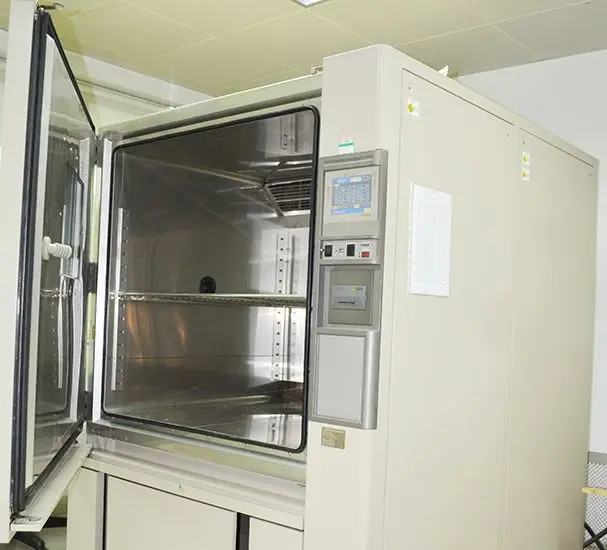
ASTM F2923 Testing for Children's Jewelry in the USA
Imitation jewelry is the latest trend in the global fashion industry, beloved by many consumers for its appearance, comparable to genuine articles, and its affordable price. However, due to the extensive use of processes such as electroplating, dyeing, and coating in its production, and because it is often worn close to the skin, it directly impacts consumer safety, making quality control of utmost importance.
Tested Product Range:
- Gold and Silver Jewelry (necklaces, earrings, rings, bracelets, bangles, anklets, headpieces, brooches, pendants, etc.)
- Pearl Jewelry (necklaces, earrings, rings, bracelets, bangles, anklets, headpieces, brooches, pendants, etc.)
- Crystal Jewelry (amethyst, citrine, smoky quartz, green quartz, etc.)
- Wooden Jewelry (agarwood, Phoebe zhennan, rosewood, RED sandalwood, sandalwood, yew, peachwood, ebony, bodhi, dragonwood, walnut, jujube wood, etc.)
- Plastic Jewelry (necklaces, earrings, rings, bracelets, bangles, anklets, headpieces, brooches, pendants, etc.)
- Glass Jewelry (glass, rhinestone, colored glaze, etc.)
- Metal Jewelry (platinum, palladium, gold-plated, gold-filled, gilded, yellow gold, rare gold, imitation gold, PSEudo-silver, alloy, etc.)
- Other Materials Jewelry (ivory, shell, coral, amber, feather, tortoiseshell, etc.)
Chinese RegULations:
- GB 28480-2012: Limits of hazardous elements in jewelry
- GB 11887-2002: Specifications and naming methods for precious metal purity
Testing Standards:
- GB/T 19719-2005: Spectrometry for nickel release in jewelry
- GB/T 19718-2005: Flame atoMIC absorption spectrometry for nickel content in jewelry
- GB/T 28485-2012: Wear and corrosion simulation for nickel release in plated jewelry
- GB/T 28020-2011: X-ray fluorescence spectrometry for hazardous elements in jewelry
- GB/T 28021-2011: Spectrometry for hazardous elements in jewelry
- GB/T 28019-2011: Spectrophotometry for hexavalent chromium in jewelry
EU Regulations:
- 2004/96/EC & 94/27/EC: Nickel release directive
- REACH Annex XVII: Items 27 and 63
- 91/338/EC: EU Cadmium Directive
- EN71: EU toy safety requirements
Testing Standards:
- EN 1811-2011: Nickel release test method for items in prolonged contact with skin
- EN 12472:2005: Wear and corrosion simulation for nickel release in coated items
- EN71-3:2013+A1:2014: EU Toy Safety, Part 3: Migration of certain elements
US Regulations:
- astm f2923-20: Standard Specification for Consumer Product Safety for Children’s Jewelry
- ASTM F963-23: Standard Consumer Safety Specification for Toy Safety
- California Proposition 65
- cpsia: Consumer Product Safety Improvement Act
- HR4428: Restrictions on cadmium, barium, and antimony in children’s jewelry
Testing Standards:
- ASTM E1613: Standard Test Method for Lead by ICP-AES, FAAS, or GFAAS
- ASTM F963-11: Standard Consumer Safety Specification for Toy Safety
- CPSC-CH-E1003-09: Standard Operating Procedure for Determining Lead in Paint and Other Similar Surface Coatings
- CPSC-CH-E1002-08: Standard Operating Procedure for Determining Lead in Children’s Products (Non-Metal)
- CPSC-CH-E1001-08: Standard Operating Procedure for Determining Total Lead in Children’s Metal Products (Including Children’s Metal Jewelry)
- CPSC-CH-E1004-11: Standard Operating Procedure for Determining Extractable Cadmium in Children’s Metal Jewelry
- CPSC-CH-C1001-09: Standard Operating Procedure for Determining Phthalates
- EN 1811: Nickel release test method for items in prolonged contact with skin
- EN 12472: Wear and corrosion simulation for nickel release in coated items
Canadian Regulations:
- SOR/2005-132: Canada Consumer Product Safety Act: Children’s Jewelry Regulations
- SOR/2010-224: Amendment to the Surface Coating Materials Regulations
Testing Standards:
- Canada Product Safety Laboratory Manual, Book 5, Method C02
- Canada Product Safety Laboratory Manual, Book 5, Method C07
Our Testing Items Include:
- Total Lead
- Total Cadmium
- Nickel Release
- Extractable Heavy Metals Content
- Phthalate Testing
- Physical Testing (tensile, torsion, sharp points, sharp edges, small parts, etc.)
Email:hello@jjrlab.com
Write your message here and send it to us
 How to Test IP68 Rating
How to Test IP68 Rating
 Differences Between FDA and LFGB for Food Contact
Differences Between FDA and LFGB for Food Contact
 Process and Precautions for Amazon CPC Certificate
Process and Precautions for Amazon CPC Certificate
 E-mark Certification Testing Service Laboratory
E-mark Certification Testing Service Laboratory
 Amazon ISO/IEC 17025 UL Testing Service Laboratory
Amazon ISO/IEC 17025 UL Testing Service Laboratory
 How to get CE Certification for Lighting Products?
How to get CE Certification for Lighting Products?
 CE Certification Standards & Process for Elect
CE Certification Standards & Process for Elect
 Japan METI Registration & Japanese Agent Servi
Japan METI Registration & Japanese Agent Servi
Leave us a message
24-hour online customer service at any time to respond, so that you worry!




